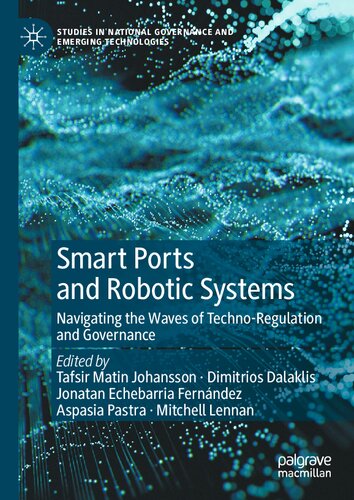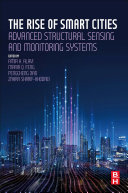Smart Ports and Robotic Systems: Navigating the Waves of Techno-Regulation and Governance Tafsir Matin Johansson
$50.00 Original price was: $50.00.$25.00Current price is: $25.00.
Smart Ports and Robotic Systems: Navigating the Waves of Techno-Regulation and Governance – Ebook Instant Download/Delivery ISBN(s): 9783031252952,3031252950,9783031252969, 3031252969
Product details:
- ISBN 10: 3031252969
- ISBN 13:9783031252969
- Author: Tafsir Matin Johansson
This book provides a comprehensive overview of smart ports and remote technologies in the maritime industry. It demonstrates how modern advances in artificial intelligence and robotics have transformed the shipping industry, and assesses the impact of this technology from a law and governance standpoint. The book covers a range of topics including port autonomous operations systems, cybersecurity, big data analytics, digitalization and blockchain to throw light on the opportunities and benefits of these new technologies in improving security and safety. It also considers the challenges and threats of their application. It concludes by examining the trajectory of national and international regulatory developments. The book will appeal to scholars and students of maritime technology, law and governance, as well as practitioners and policymakers. Chapters 8, 19 and 20 are available open access under a Creative Commons Attribution 4.0 International License via link.springer.com.
Table contents:
1. Introduction to Smart Ports and Robotic Systems: Navigating the Waves of Techno-Regulation and Governance
Part I. Setting the Scene
2. The Possibilities of Ocean Innovation Diplomacy to Promote Transnational Innovation Ecosystems for the Maritime Sector
Part II. Vessel Autonomy & Autonomous Systems Redux
3. “Utopia at Sea” from the Captain’s Chair: Are Autonomous Ships the Real Solution to Human Error?
4. Changing Ocean Observation and Cargo Carrying with Disruptively Affordable, Long Duration Autonomous Vessels—Case Study: SubSeaSail LLC
5. Crowdsourced Bathymetry and Automation: An Evolutionary Process to Improve the Means of Navigation
6. The Use of Marine Autonomous Systems in Ocean Observation Under the LOSC: Maintaining Access to and Sharing Benefits for Coastal States
Part III. Smart Ports
7. Implications of Technological Innovation and Respective Regulations to Strengthen Port and Maritime Security: An International Agenda to Reduce Illegal Drug Traffic and Countering Terrorism at Sea
8. Automated Port Operations: The Future of Port Governance
9. Canada’s Rapidly Evolving Smart Ports
10. Concession-Based Project Finance for Smart Ports with a Special Focus on Emerging Economies
11. Smart Port State Enforcement Through UAVs: New Horizons for the Prevention of Ship Source Marine Pollution
12. Digitalization and Cyber Physical Security Aspects in Maritime Transportation and Port Infrastructure
13. Port Cybersecurity: Balancing Evolving Regulatory Compliance with Enterprise Risk Management
14. Opportunities and Challenges in Relation to Big Data Analytics for the Shipping and Port Industries
Part IV. Remote Inspection Techniques
15. Remote Inspections Scheme on Tanker Vessels During Covid-19 Pandemic
16. Techno-Regulatory Challenges for Remote Inspection Techniques (RIT): The Role of Classification Societies
17. Remote Inspection Schemes: Past, Present, and Future
18. Human-Autonomy Teaming in Ship Inspection: Psychological Perspectives on the Collaboration Between Humans and Self-Governing Systems
19. Lessons Learned from Maritime Nations Leading Autonomous Operations and Remote Inspection Techniques
20. Towards an International Guideline for RIT End-Users: Spearing Through Vessel Inspection and Hull Cleaning Techno-Regulatory Elements
Part V. Tying the Threads
21. Smart Ports and Robotic Systems: Where Is It All Going from Here?
People also search:
smart ports and robotic systems
types of robotic system
robotic systems examples
what are the main components of all robotic systems
smart ports in the world
You may also like…
Politics & Philosophy
Politics & Philosophy - Philosophical Positions & Movements
Politics & Philosophy - Government & Politics
Children's Books - Growing Up & Facts of Life
Social Science
Autonomous Vessels in Maritime Affairs: Law and Governance Implications Tafsir Matin Johansson
Jurisprudence & Law
Business & Economics - Others
Engineering
The Rise of Smart Cities : Advanced Structural Sensing and Monitoring Systems Amir Alavi













